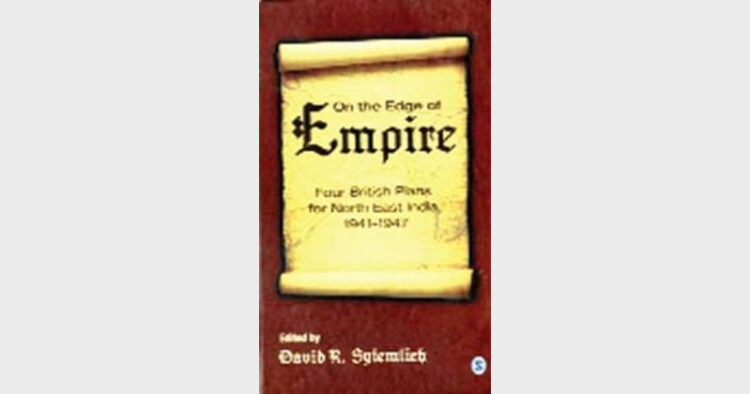On the Edge of Empire: Four British Plans for North East India, 1941-1947; David Reid Syiemlieh (ed), Sage Publications Indian Pvt Ltd; Pp 225; Rs 795 |
The problems in North-East India are challenges to all present administrators and politicians concerned with these areas. But these challenges have an important genesis in one authoritative conspiracy of British establishment in India. It was a Plan, now it maybe conceived as conspiracy. British Government intended to take all North-East Hill regions either as an independent country or to be remained separate British colony. It was a conspiracy when it is viewed or interpreted now in terms of complex situation emerged in almost all seven states either related to intra and inter states or at the adjoining international boundaries. In British terms, it was a “Crown Colony” Plan, modified and developed into four plans under four British ICS officers who served at the highest posts.
“On the Edge of Empire” unearths the malicious intentions of British establishment to exclude North-East from India in any form whatsoever could be easy at that time. All the Hills including Naga, Lushai, Khasi and Jaintia were categorised as either “Excluded Areas” or “Partially Excluded Areas” finally got stamp under Government of India Act, 1919. All were under the Assam Province whose Governor had overriding power in both the categories of areas. However, there was official consensus of non-regulation pattern of administration. This non-regulation attitude carried the baggage of 1862 and 1874 treaties in which this area was referred as “Foreign”. So, Government of India treated the area as tribal and unadministered. Therefore, there was a distinction between “the boundary of the Queen and your country”.
Four British ICS officers serving in the region, had given their thoughts through different notes on what should be the future of North-East vis-à-vis India. All these notes show the real motives behinds the “Crown Plan”. Prof. Syiemlieh, former Vice-Chancellor of Rajiv Gandhi University and Member, UPSC took the challenge to study the mystery surrounding the Crown Colony Plan/Protectorate. Robert N. Reid in his note of 1941 had mentioned the details of Crown Plan for North-East India and the hill region of Burma. Reid said, “It can not be left to Indian political leaders with neither knowledge, interest nor feelings for these areas.” He notes that when one emerges from the hills into the plains of Assam one enters a different world, whereas the boundary between our hills and Burma hills, is artificial as it is imperceptible.
These thoughts are clearly showing that the British establishment had firm opinion to make North-East separate from India and based on these opinions, they did not try to assimilate this region into mainland Presidencies of India at the administrative level. The British entered into the heart of the region as rescuers of the people from the invasion of the Burmese in 1824 but stayed on in the region after the Treaty of Yandabo with the Burmese in 1826. Soon began an annexation spree by which one tribe after another was conquered and their habitat attached to their British Indian empire. Although on the eve of their withdrawal from India the British appeared to be extremely concerned about the safety and sustenance of these tribes, they did not show any compassion in massacring these tribes to annex their territory at least at this point in time. Finally, in the closing years of the British rule in India, a secret plan was conceived and discussed at the highest circles for a crown colony comprising the hill areas of North-East India and the tribal areas of Burma.
North-East India comprises of seven states commonly known as the “Seven Sisters”. They are Arunachal Pradesh, Assam, Manipur, Meghalaya, Mizoram, Nagaland and Tripura. The North-East is a true frontier region. It has over 2,000 km of border with Bhutan, China, Myanmar and Bangladesh and is connected to the rest of India by a narrow 20 km wide corridor of land. The British government wanted to annex the whole of North-East to make this region as a balancing tool between India and China to serve the European interests in the future.
Naveen Kumar (The reviewer is a senior political analyst and vp of Viplav Communications Pvt Ltd.)





![A Representative image [ANI Photo]](https://organiser.org/wp-content/uploads/2025/12/representative-image-e1765612818961-120x70.webp)







Comments